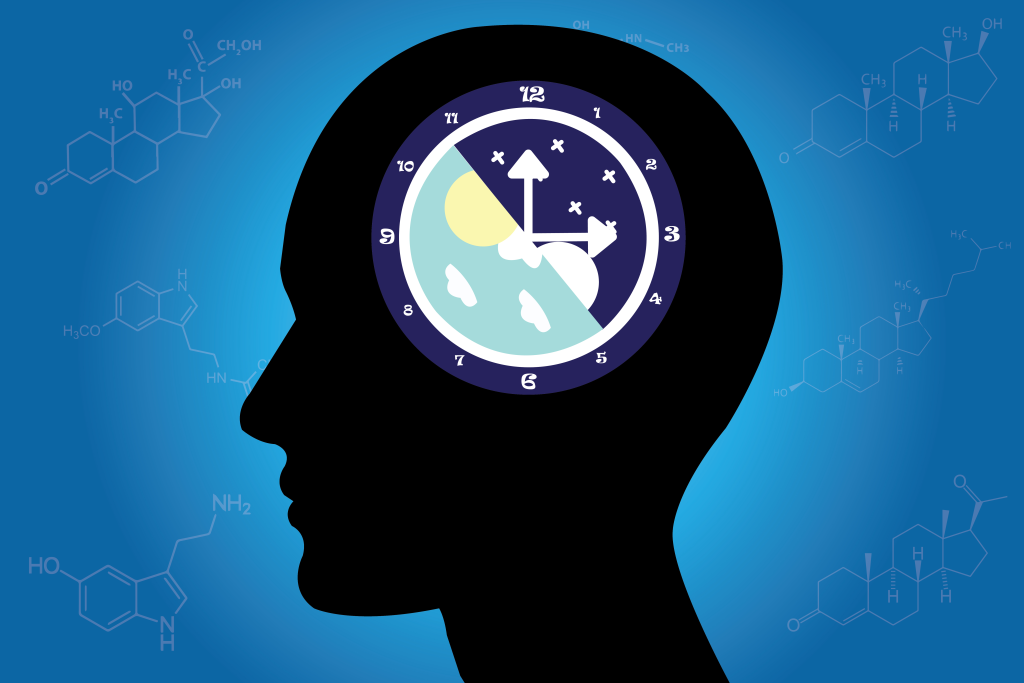At a glance
Struggling to sleep despite feeling tired can stem from poor dietary and lifestyle habits, nutrient deficiencies, or chronic stress. Adopting a low-carb diet and practicing good sleep hygiene may help improve insomnia naturally. However, persistent or worsening sleep issues should be evaluated by a sleep specialist.
You probably know that drinking coffee and alcohol can interrupt a good night’s sleep. But are you aware that snacking, overeating sugar, and not getting enough sun can stop you from sleeping at night?
Simple diet changes can fine-tune your sleep-wake cycle and reduce sleep problems by replenishing electrolytes and naturally boosting melatonin.
Let’s look at common reasons for poor sleep and learn how to promote healthy sleep habits by making beneficial dietary and lifestyle changes.
Seven reasons why you can’t sleep when you’re tired
Your sleep-wake cycle is controlled by sleep-regulating hormones, neuronal processes, and external cues such as light exposure and body temperature.
Research published in Nutrients found that certain dietary and lifestyle choices can cause hormonal imbalances and overstimulate the nervous system. This can cause difficulty falling asleep even when you are tired.1
Here are seven reasons why you may not get enough quality sleep.
1. Frequent snacking
Snacking close to bedtime can significantly disrupt your internal body clock and lead to sleep issues.
Digesting food requires energy and promotes metabolic activity, which can make relaxing and falling asleep challenging.
2. High-carb diet
Eating sugars and carbs can quickly raise blood sugar levels and trigger the release of insulin. This critical hormone regulates energy metabolism and fat storage.
Chronically elevated insulin due to a high-carb diet can lead to insulin resistance, a metabolic disorder characterized by a lack of cellular response to insulin signaling. Insulin resistance is linked to a frequent need to urinate, which can significantly impact sleep quality.
In addition, insulin resistance is linked to increased systemic inflammation, which can worsen inflammatory sleep conditions such as obstructive sleep apnea.
3. Overeating protein
Consuming too much protein can trigger sleep issues in some sensitive individuals.
Protein-rich foods, especially those containing high levels of the amino acid tyrosine, have been found to increase the production of the neurotransmitters dopamine and norepinephrine.
These neurotransmitters have excitatory properties and activate the nervous system, making it more difficult to wind down and fall asleep.
4. Alcohol
Alcohol can make you feel drowsy and may help you fall asleep faster. However, alcohol significantly disrupts sleep cycles and causes fragmented sleep, leaving you tired and drained the next day.
Even small amounts of alcohol can suppress rapid eye movement (REM) sleep, which is vital for cognitive functioning, cellular repair, and recovery. REM sleep deprivation can lead to daytime sleepiness, impaired memory, and lack of focus.
A study published in the Handbook of Clinical Neurology summarizes, “Alcohol initially acts as a sedative. In the second half of the night, sleep is disrupted, with increased wakefulness followed by a period of poor quality sleep that can lead to a downward spiral, with insomnia being self-treated with alcohol to produce a rapid sleep onset.”2

5. Caffeine
While moderate amounts of caffeinated beverages such as black coffee and tea have several health benefits, drinking too much can quickly impact your ability to fall asleep and stay asleep.
Caffeine has been found to bind adenosine receptors in the brain. Adenosine is a calming neurotransmitter that promotes relaxation and sleep.
By blocking these receptors, caffeine inhibits the sleep-inducing effects of adenosine and, due to its stimulating properties, promotes wakefulness at the same time.
Caffeine is also a diuretic that can cause increased urination at night, potentially disrupting deep sleep phases, which can result in an inability to fall back asleep.
6. Vitamin D deficiency
Vitamin D deficiency is widespread and can worsen sleep disorders such as sleep apnea. Maintaining optimal vitamin D levels may enhance sleep quality.
Vitamin D, the sunshine vitamin, has potent anti-inflammatory properties and promotes normal immune functions.
Low vitamin D levels are linked to chronic inflammation and may contribute to the narrowing of the upper airway, which increases the risk of obstructive sleep apnea.
7. Stress
Stress activates the body’s fight-or-flight response and triggers the release of stress hormones such as cortisol and adrenaline.
These hormones activate metabolic processes and increase pulse rate and blood pressure, which can cause difficulties falling asleep and explain why stress can significantly disturb sleep quality.
Interestingly, research published in the Journal of Clinical Trials found that just one night of partial sleep deprivation increases average cortisol levels the following day, perpetuating the vicious cycle of elevated cortisol and poor sleep quality.3
Watch the video below to learn which foods to avoid if you want a good night’s sleep.
Circadian rhythm explained
The circadian rhythm, also known as your internal body clock, regulates the neuronal, metabolic, hormonal, and mental changes your body undergoes within a 24-hour cycle.
Circadian rhythms are mainly influenced by light and darkness and controlled by the suprachiasmatic nucleus (SCN). This small region of the brain receives nerve signals about light and dark from specialized cells in the retina of the eyes.
The SCN is like a biological clock that controls the production of melatonin, a crucial sleep hormone that prepares your body for sleep.
Melatonin levels increase during the evening and decrease in response to bright light in the morning, which triggers wakefulness.
Poor sleep hygiene habits–such as exposure to blue light emitted from digital screens, inconsistent sleep patterns, and an uncomfortable bedroom–can impact melatonin production and sleep cycle regulation, which increases the risk of restless nights and sleep disorders.

Tips for falling asleep faster at night
Getting enough restful and rejuvenating sleep is crucial for physical and mental well-being. During sleep, your body recovers, consolidates memories, and restores energy.
Sleep issues can make you sick and significantly increase the risk of various health conditions, including obesity, diabetes, heart disease, and weakened immune defenses.
Here are four tips on how you can fall asleep faster at night.
1. Avoid too many fluids during the evening
Drinking too many fluids close to bedtime may cause you to wake up due to a full bladder.
Reducing your water intake during the evening hours can help you avoid having a constant urge to pee at nighttime.
2. Increase zinc-rich foods
Zinc has unexpected sleep benefits, and increasing zinc-rich foods such as oysters, seafood, and red meat can support your sleep health.
Zinc is needed for the production of melatonin and enhances its sleep-promoting properties. This essential mineral has also been found to support the function of GABA (gamma-aminobutyric acid), a crucial neurotransmitter that facilitates a calm and relaxed state conducive to sleep.
3. Boost melatonin naturally
Boosting melatonin levels naturally can help you fall asleep faster, stay asleep longer, and support a healthy, balanced sleep-wake cycle for better overall rest and recovery.
Here are several steps you can take to boost melatonin levels naturally:
- Keep a consistent sleep schedule
- Reduce blue light exposure from digital screens during the evening
- Avoid bright lights and dim surrounding lights two hours before bedtime
- Avoid snacking and alcohol close to bedtime
- Combine a ketogenic diet with intermittent fasting
- Keep your bedroom dark and cool
4. Find ways to relax
Calming an overactive nervous system is crucial to prepare the body for restful sleep, and using relaxation techniques throughout the day can help mitigate stress, anxiety, and racing thoughts.
Exercise and stress-reducing activities such as stretching, breathing exercises, or taking a warm bath before bedtime can help you wind down and relax.

Why you’re tired during the day
Daytime sleepiness is often linked to delayed sleep phase syndrome (DSPS), a sleep disturbance characterized by an inability to fall asleep at a conventional bedtime.
Most people with DSPS feel tired but can’t sleep and often don’t get enough restorative sleep, causing tiredness and lethargy during the day.
If you suffer from sleeping problems, you may have considered sleeping pills or other sleep medicine, which typically contain sedative compounds. However, most sleeping aids don’t work and often interfere with regular sleep cycles, making you more tired.
Sedatives are metabolized in the liver, and depending on the exact type and dosage of sleeping aids, your liver may not entirely eliminate these compounds overnight, and you may continue to experience sedative effects the following day.

What causes insomnia on keto?
Insomnia can occur for various reasons when following a ketogenic diet. While most people notice improved sleep when doing keto, others may experience disrupted sleep patterns.
Here are four potential reasons to experience sleep issues when following keto.
1. Increased energy
Keto typically increases energy levels due to the metabolic changes triggered by burning fat as the primary fuel source.
While more energy is one of the many health benefits of a low-carb diet, it can cause temporary sleep issues. Having more energy may mean your body feels less tired during the evening, which can cause difficulties falling asleep or waking up too early.
Increasing physical activity typically resolves this issue and helps get a good night’s rest.
2. Inadequate intake of calcium and magnesium
If you are doing keto but aren’t focusing on a nutritious low-carb diet like Healthy Keto® that provides ample nutrients while maintaining ketosis, you may be at risk of mineral deficiencies.
Magnesium and calcium are essential in relaxing muscle tone and calming the nervous system, and deficiency can increase the risk of DSPS and insomnia.
Consuming plenty of mineral-rich green leafy vegetables, full-fat dairy, and seeds and nuts promotes a relaxed body and may help you get restful sleep.

3. Lack of potassium-rich foods
“Replenishing potassium is crucial to support healthy sleep when doing keto,” explains Dr. Berg.
Keto, especially during the early phases of keto-adaptation, can trigger increased urination and depletion of essential electrolytes.
Potassium is the most important electrolyte for sleep regulation. Lack of adequate potassium can cause an elevated pulse rate and increased blood pressure, resulting in an overstimulated nervous system, which can cause trouble sleeping.
To support optimal potassium levels, aim to include 7 to 10 cups of leafy greens and non-starchy vegetables in your daily diet, as they’re rich natural sources of this essential mineral.
You can also make your own electrolyte drink with potassium, which is an excellent strategy to promote optimal electrolyte balance and support restful sleep.
4. Vitamin B1 deficiency
If you started keto and often find yourself lying awake at night due to racing thoughts, you may have developed a vitamin B1 deficiency.
Vitamin B1 is involved in the production of neurotransmitters and hormones that influence sleep and wakefulness and helps promote a calm nervous system, which is essential for restful sleep.
Some of the best vitamin B1 sources include sunflower seeds, pork, salmon, tuna, asparagus, spinach, and pasture-raised eggs.
Watch the video below to learn what causes insomnia on keto.
When to seek a sleep specialist
It’s best to consult a sleep specialist if you suffer from persistent sleep issues that affect your daily functioning and quality of life.
If you experience any of these sleep problems, it’s recommended to consult a sleep expert:
- Chronic insomnia
- Excessive daytime sleepiness
- Restless legs syndrome at night
- Sleep apnea
- Shift work-related sleep disorders
- Night terrors
A sleep study typically includes a comprehensive evaluation and diagnostic tests to formulate personalized treatment plans tailored to your specific needs.
Key takeaways
- Sleep problems can impact your well-being and increase the risk of severe health conditions such as diabetes and heart disease.
- Sugary foods, a high-protein diet, vitamin D deficiency, and alcohol consumption can interfere with the internal body clock and contribute to sleep issues.
- Following a low-carb diet, maintaining a regular sleep schedule, promoting melatonin production through good sleep habits, and utilizing relaxation techniques can have a profoundly beneficial effect on sleep health.
- Seek care from a sleep specialist if you experience persistent sleep issues that impact your quality of life.
FAQ
1. Why can’t I sleep at night even when I’m tired?
There are many reasons why you can’t sleep when you’re tired. Factors such as stress, anxiety, poor sleep hygiene, an inconsistent sleep schedule, shift work, and alcohol consumption can interfere with your sleep-wake cycle and disrupt sleep.
2. Why won’t my body let me sleep at night?
Delayed sleep phase syndrome (DSPS) is a common sleep disorder characterized by an inability to sleep at a conventional bedtime despite feeling tired.
DSPS is believed to be triggered by a misaligned circadian rhythm, which may be caused by an irregular sleep schedule, blue light exposure from digital devices, or an overly active nervous system.
3. Why can’t I sleep at night, but I can during the day?
Misaligned wake-sleep cycles can delay daily melatonin release, making it difficult to fall asleep. This can lead to insomnia and a lack of restful and rejuvenating sleep, which typically induces daytime sleepiness.
Shift work, an inconsistent sleep schedule, insulin resistance due to a high-carb diet, and consuming caffeine or alcohol close to bedtime can disrupt your internal body clock and misalign your circadian rhythm, making you sleepy during the day.
4. Is it bad to be tired during the day?
While being tired for a day or two isn’t a cause for concern, chronic sleep deprivation can have serious health implications and increases the risk of obesity, metabolic disorders, heart disease, and inflammatory conditions.
5. How can I fix my circadian rhythm?
You can regulate and restore your circadian rhythm by limiting artificial light during the evening, increasing your intake of zinc-rich foods, sticking to a regular sleep schedule, limiting alcohol and caffeine, and practicing relaxation techniques if you feel stressed or anxious.
6. Why am I exhausted but can’t sleep?
Being unable to fall asleep despite feeling exhausted can be caused by snacking too close to bedtime, consuming alcohol, frequent need to urinate at night, blood sugar imbalances, and vitamin D deficiency.
In some cases, being unable to sleep can be a symptom of a sleep disorder such as sleep apnea, circadian rhythm disorder, or hormonal imbalances.
7. How can I force myself to sleep?
Forcing yourself to fall asleep can be counterproductive, as trying too hard to fall asleep can increase stress and anxiety and make it even more challenging to relax.
8. What can I drink to sleep faster?
Drinking kefir may help promote healthy sleep and has been found to help you fall asleep faster.
Kefir contains probiotics bacteria, including Lactobacillus, that help break down the stress hormone cortisol, which counteracts the sleep-inducing properties of melatonin.
9. What foods make you sleepy?
Foods such as full-fat dairy, tuna, turkey, chicken, seeds, nuts, and oysters contain sleep-promoting nutrients that support a relaxed muscle tone and calm nervous system and can help your body prepare for sleep.
10. Why can’t I sleep while on keto?
If you aren’t following Healthy Keto®, you may have a low intake of sleep-promoting nutrients such as B vitamins, magnesium, calcium, and potassium.
11. Can snacks make it difficult to sleep?
Yes, snacking can disrupt your sleep cycles and may lead to sleep issues. Digestion requires energy and stimulates metabolic activity, which can interfere with restful sleep.
12. What is the healthiest bedtime snack?
It’s best to limit snacks at bedtime, as snacking can cause sleep disturbances. If you often have cravings during the evening, consume plenty of healthy fats with dinner to keep you feeling satiated and avoid late-night snacking.
13. How do I fall asleep when I’m overtired?
Create a soothing sleep environment and find relaxing techniques that work for you to calm an overstimulated and exhausted nervous system.
14. Why is my brain overactive at night?
Racing thoughts at night are often caused by stress or can be a symptom of an anxiety disorder or depression. There is also evidence that vitamin B1 deficiency can increase the risk of an overactive brain that stops you from sleeping.
15. Does closing your eyes count as sleep?
No, closing your eyes doesn’t count as sleep. During sleep, your body undergoes a complex cascade of repair and rejuvenation, and closing your eyes doesn’t trigger these restorative processes.








